The Germline and Somatic Origins of Prostate Cancer Heterogeneity
- PMID: 39945744
- PMCID: PMC12046336
- DOI: 10.1158/2159-8290.CD-23-0882
The Germline and Somatic Origins of Prostate Cancer Heterogeneity
Abstract
This study uncovered 223 recurrently mutated driver regions using the largest cohort of prostate tumors to date. It reveals associations between germline SNPs, somatic drivers, and tumor aggression, offering significant insights into how prostate tumor evolution is shaped by germline factors and the timing of somatic mutations.
©2025 The Authors; Published by the American Association for Cancer Research.
Conflict of interest statement
N.S. Fox reports grants from Prostate Cancer Canada during the conduct of the study. R.M.S. Bornman reports grants from the Department of Defense during the conduct of the study. M. Fraser reports a patent for “Methods and systems for prostate cancer characterization and treatment” pending to University Health Network and a patent for “Multi-modal prostate cancer marker” issued to University Health Network. M. Wakefield reports grants from Stanford Fox Mediacal Research Foundation during the conduct of the study, as well as nonfinancial support from Clovis Oncology and AstraZeneca outside the submitted work. A.U. Kishan reports honorarium and research support from Varian Medical Systems, Lantheus, Point Biopharma, and Janssen, honorarium from Boston Scientific and Novartis, research support from Artera, and grant support from the Department of Defense and NIH. M.P. Lolkema reports personal fees from Roche and Amgen, grants and personal fees from Sanofi, JnJ, MSD, and grants from KWF (Dutch Cancer Foundation) and NWO (Dutch Governmental Science Fund) during the conduct of the study. M.L. Freedman reports personal fees from Precede Biosciences outside the submitted work. N.M. Corcoran reports grants and personal fees from AstraZeneca and Bayer, personal fees from Astellas, and nonfinancial support from SillaJen outside the submitted work. P.C. Boutros reports grants from Prostate Cancer Canada, the Canadian Cancer Society, the Canadian Institutes for Health Research, the Prostate Cancer Foundation, the Department of Defense PCRP, and the NIH/NCI during the conduct of the study, as well as other support from BioSymetrics Inc., Intersect Diagnostics Inc., and Sage Bionetworks outside the submitted work; in addition, P.C. Boutros has multiple issued and pending patents on prostate cancer biomarkers. No disclosures were reported by the other authors.
Figures
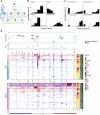


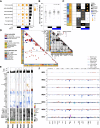
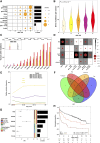
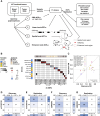
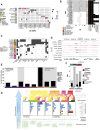
References
-
- Siegel RL, Miller KD, Fuchs HE, Jemal A. Cancer statistics. CA Cancer J Clin 2021;71:7–33. - PubMed
-
- Smith BD, Smith GL, Hurria A, Hortobagyi GN, Buchholz TA. Future of cancer incidence in the United States: burdens upon an aging, changing nation. J Clin Oncol 2009;27:2758–65. - PubMed
-
- Hamdy FC, Donovan JL, Lane JA, Mason M, Metcalfe C, Holding P, et al. . 10-Year outcomes after monitoring, surgery, or radiotherapy for localized prostate cancer. N Engl J Med 2016;375:1415–24. - PubMed
-
- Epstein JI, Egevad L, Amin MB, Delahunt B, Srigley JR, Humphrey PA, et al. . The 2014 International Society of Urological Pathology (ISUP) consensus conference on Gleason grading of prostatic carcinoma: definition of grading patterns and proposal for a new grading system. Am J Surg Pathol 2016;40:244–52. - PubMed
-
- D’Amico AV, Whittington R, Malkowicz SB, Fondurulia J, Chen MH, Kaplan I, et al. . Pretreatment nomogram for prostate-specific antigen recurrence after radical prostatectomy or external-beam radiation therapy for clinically localized prostate cancer. J Clin Oncol 1999;17:168–72. - PubMed
MeSH terms
Grants and funding
- R01 CA245294/CA/NCI NIH HHS/United States
- R01 CA227466/CA/NCI NIH HHS/United States
- R01 CA227237/CA/NCI NIH HHS/United States
- U2C CA271894/CA/NCI NIH HHS/United States
- R01 HG006399/HG/NHGRI NIH HHS/United States
- U24 CA248265/CA/NCI NIH HHS/United States
- R01 HG011345/HG/NHGRI NIH HHS/United States
- P30 CA016042/CA/NCI NIH HHS/United States
- W81XWH2210247/DOD Prostate Cancer Research Program (PCRP)
- U01 HG009080/HG/NHGRI NIH HHS/United States
- R01 CA270108/CA/NCI NIH HHS/United States
- R01 ES029929/ES/NIEHS NIH HHS/United States
- R01 CA251555/CA/NCI NIH HHS/United States
- R01CA270108/National Cancer Institute (NCI)
LinkOut - more resources
Full Text Sources
Medical

